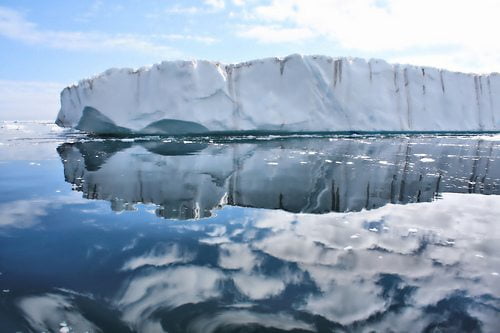

Environment
Greenland ice melt and sea level rise ‘greatly underestimated’
Two separate studies have concluded that ice in Greenland could be lost more rapidly than expected, leading to sea levels rising quicker than previously estimated.
The first study, published in the journal Proceedings of the National Academy of Sciences, comes from the University of Buffalo and agues that current ice sheet modelling studies are “too simplistic” to accurately predict future sea level rise.
The Greenland Ice Sheet is the second-largest body of ice on Earth, if it melts completely, oceans could rise by 20 feet, threatening costal communities.
The study used satellite and aerial data to reconstruct how the height of the ice sheet changed at nearly 100,000 locations from 1993 to 2012. Today’s simulations use the activity of four well-studied glaciers to forecast how the entire ice sheet is being affected. However, the new study argues that these locations may not be representative of what is happening with glaciers across the ice sheet.
Geophysicist Beata Csatho, an associate professor at the university who led the research, commented, “The great importance of our data is that for the first time, we have a comprehensive picture of how all of Greenland’s glaciers have changed over the past decade.”
The second study, conducted by the University of Leeds and published in the journal Nature Climate Change, support the claims of the first study.
Researchers simulated the future distribution of lakes that form on the sheet surface from melted snow and ice – known as supraglacial lakes – for the fist time. The impact of these lakes has previously thought to be small. However, the research has shown that they will migrate further inland over the next half century, potentially altering the ice sheet flow in dramatic ways.
Supraglacial lakes are darker than ice and as a result absorb more of the sun’s heat, leading to increased melting. The researchers explain that when the lakes reach a critical size, they drain though ice fractures, allowing water to reach the ice sheet base, which causes it to slide more quickly into the oceans.
“Because ice losses in Greenland are a key signal of global climate change, it’s important that we consider all factors that could affect the rate at which it will lose ice as climate warms,” said Professor Andrew Shepherd from the School of Earth and Environment at the university.
“Our findings will help improve the next generation of ice sheet models, so that we can have greater confidence in projections of future sea level rise.”
Photo: Christine Zenino via Flickr
Further reading:
Vast ice structures discovered beneath Greenland ice sheet
Study: Greenland and Antarctica are losing 500 km³ of ice per year
Greenland experiences ‘record high’ temperatures


 Environment10 months ago
Environment10 months agoAre Polymer Banknotes: an Eco-Friendly Trend or a Groundswell?

 Environment11 months ago
Environment11 months agoEco-Friendly Home Improvements: Top 7 Upgrades for 2025

 Features9 months ago
Features9 months agoEco-Friendly Cryptocurrencies: Sustainable Investment Choices

 Features10 months ago
Features10 months agoEco-Friendly Crypto Traders Must Find the Right Exchange






























